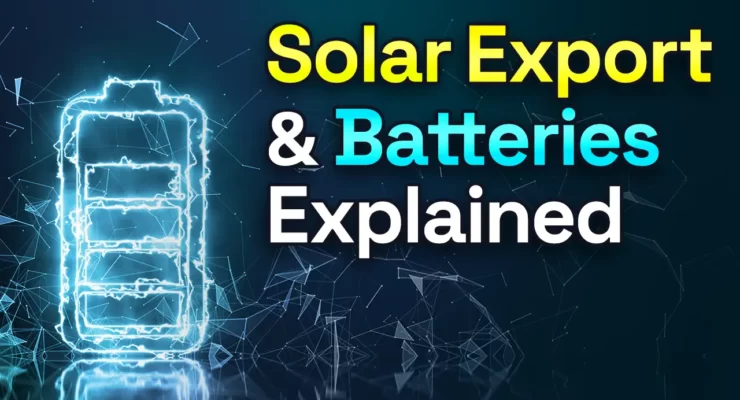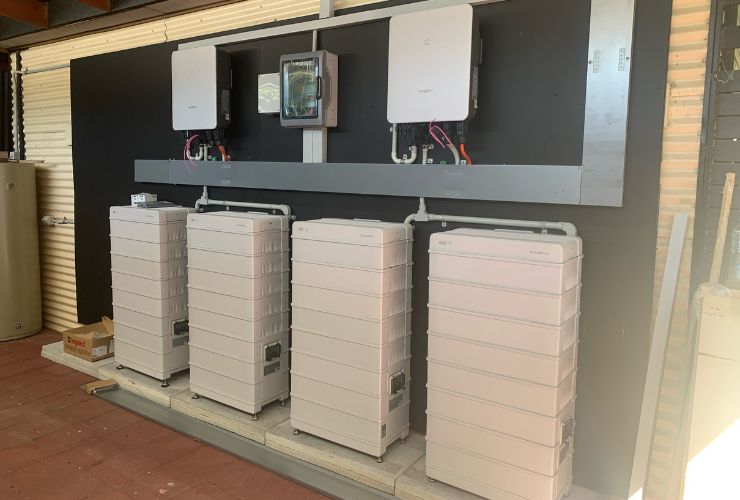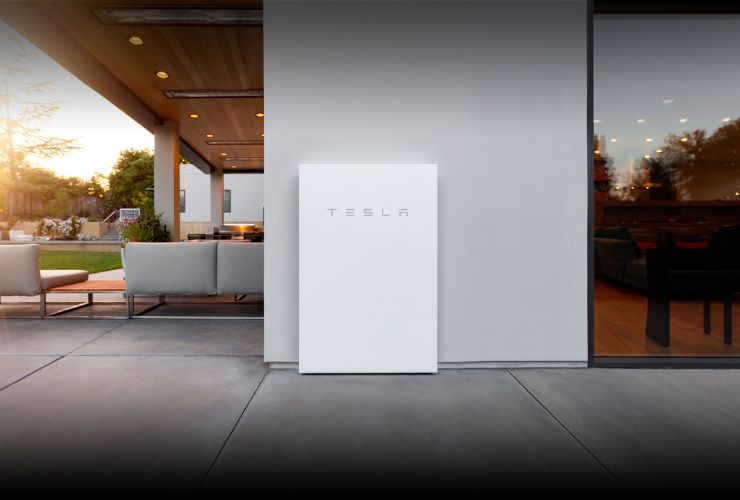
Fast read
When evaluating the payback period for a solar battery, it's essential to factor in the Feed-in Tariff (FiT) you receive for exporting excess electricity to the grid. While adding a battery helps you become more self-sufficient and saves on purchased electricity, the lower the FiT the better the battery payback calculations.
In working out battery payback periods you also need to consider the income from FiT. The FiT typically ranges from 5c to 8c per kWh.
Considering this, the payback period for different battery models and brands can vary significantly, impacting the financial feasibility of battery installation.
Why should I look at the feed-in tariff when considering the payback on a solar battery?
With solar batteries becoming a hot topic and increasingly popular, calculating what the benefit of a solar battery is becomes a regular topic, especially with the consideration of feed-in tariffs. One of the reasons to add a home storage battery is to become more self-sufficient. This is achieved by being able to use more of the solar electricity that is produced by your solar power system in the home rather than sending the power back to the grid and getting paid a low feed-in tariff.
If you are looking at the simple rough back-of-the-envelope calculation for adding a battery system to your solar, you are looking at the savings per kWh of electricity you can use from your battery rather than buying from the grid. On average, around the country, this is approximately 35 to 40c per kWh.
Here are the calculations of battery payback with feed-in tariffs
You can multiply the 38 cents per kWh cost by the amount of power you use overnight to calculate how much you could save daily. If you use, for example, 10kWh overnight, the potential savings would be $0.38 x 10kWh = $3.80 per day or $1, 387 a year in electricity tariffs.
Now because you do not export these 10kWh every day to the grid, you lose the FiT income from the energy retailer. Let’s assume you earn 6 cents per kWh. The calculation goes like this: 6 cents x 10kWh = 60cent per day “income” x 365 days = $219 FiT forgone.
$1,387 – $219 = $1,168 real benefits of an 11 to 12 kWh battery.
This calculation exemplifies a broader truth about solar energy and batteries. That the dynamics between Feed-in Tariffs (FiT) and battery storage are intrinsically linked. The Feed-in Tariff, when they were high and generous originally served as an economic mechanism designed to accelerate investment in solar energy technologies. Now the FiT reduction to a low level serves as an economic signal to go for solar and batteries.

Electricity retailers who are getting more and more mean on the solar Feed-in Tariff will actually contribute to solar system-owning customers getting home batteries and becoming even less dependent on the energy retailers. Therefore in my opinion the energy retailers are not doing themselves a favour by continuously reducing the FiT.
Moreover, the emergence of home batteries has significantly altered the playing field. Households and businesses with solar PV systems can now have an alternative to the low FiTs offered and store excess electricity instead of sending it back to the grid, thereby bypassing the often dismal FiT electricity rates.
Other battery benefits
Overall the calculations above are very rough, as during the day a battery can multiple times release stored solar power when clouds come in etc., and also at night the home consumption will not be a steady 10 kWh every night. As we do not have the perfect consumption data from a whole year of cause we have to make some general assumptions.
Naturally, a battery’s benefit go past the pure financial elements. Other reasons for a battery are energy independence from fossil fuel electricity, backup in case of a blackout, bragging rights to the neighbours and the ability to shift the solar from the day to charge an EV at night.
Then there is the option to join a Virtual Power Plant set up – when you have a battery. This means the energy retailers at times of high electricity demand, can “dip” into your battery and pull out power to support the network. While one small home storage battery of course will not make much of a difference, when thousands of batteries get involved, it does have an impact. Let’s assume you do join a VPP and this increases your battery income by a further $350.
VPPs explained
Imagine a neighbourhood where many houses have solar panels and batteries. A Virtual Power Plant (VPP) acts like a smart manager that oversees all these individual energy setups from a virtual central control room.
On a sunny day, some houses gather more solar energy than they can use or store. The VPP redirects this extra energy to houses that need it. Conversely, on cloudy days, it sends stored energy from houses with a surplus to those that need it.
The VPP can also interact with the bigger power grid. If the grid needs more power, the VPP can provide some stored energy from the neighbourhood, earning money for the owners of batteries.
Specific payback periods
If we were to then look at this as a payback on the cost of installing a battery, using a couple of different product options as an example:
Sungrow HV 10.8kwh battery
(Approx. Cost ($9,500) additional to standard grid connect solar)
$9,500/ $1,400 = 6.8 years
Tesla Powerwall 2 13.5KWh Battery
The battery cost installed $16,000
$16,000/ $1,600= 11,4years

The design and brand appeal of a solar battery, like the Tesla Powerwall, can also influence the buyer’s decision. These batteries are not only tools for energy storage but are becoming a statement of eco-friendliness and modernity. They symbolise a household’s commitment to a less fossil fuel-dependent future. Furthermore, as the technology matures, the aesthetics, user interface, and integration with smart home systems are becoming significant selling points for homeowners.
In summary
As you can see from the general calculations, some batteries already move into respectable payback periods and then offer additional benefits. If you throw an EV in the mix and allow the petrol savings to be also considered for the payback calculations, suddenly a 4-year payback is possible.
So it is clear that the amount paid for each kWh of the feed-in tariff can greatly affect the value proposition of a home storage battery.
The evolution of Feed-in Tariffs in Australia can significantly drive the adoption of solar batteries. As solar system owners become more discerning and proactive in managing their energy consumption, the dynamics between the Feed-in Tariff, the cost of solar batteries, and the benefits they bring are poised to become increasingly prominent in consumer decisions.
